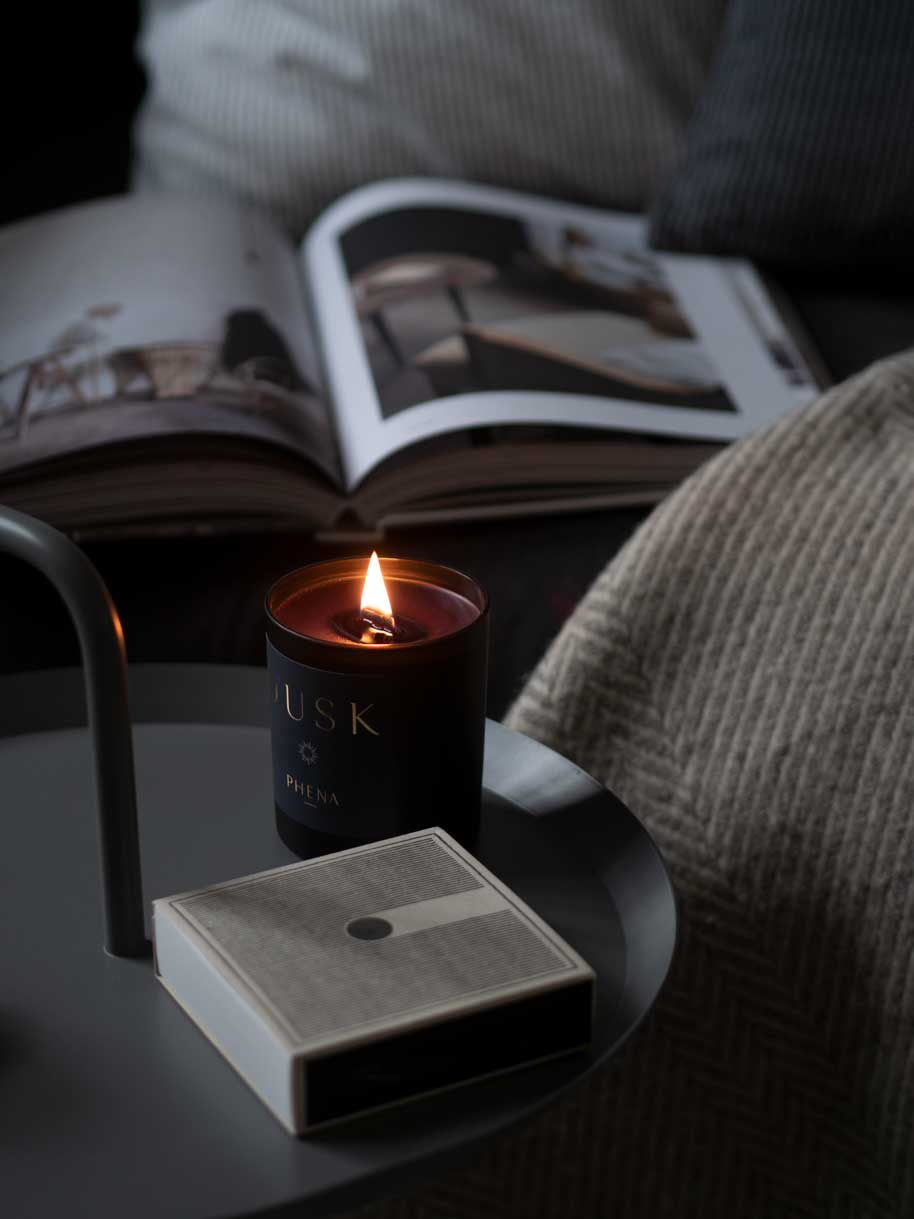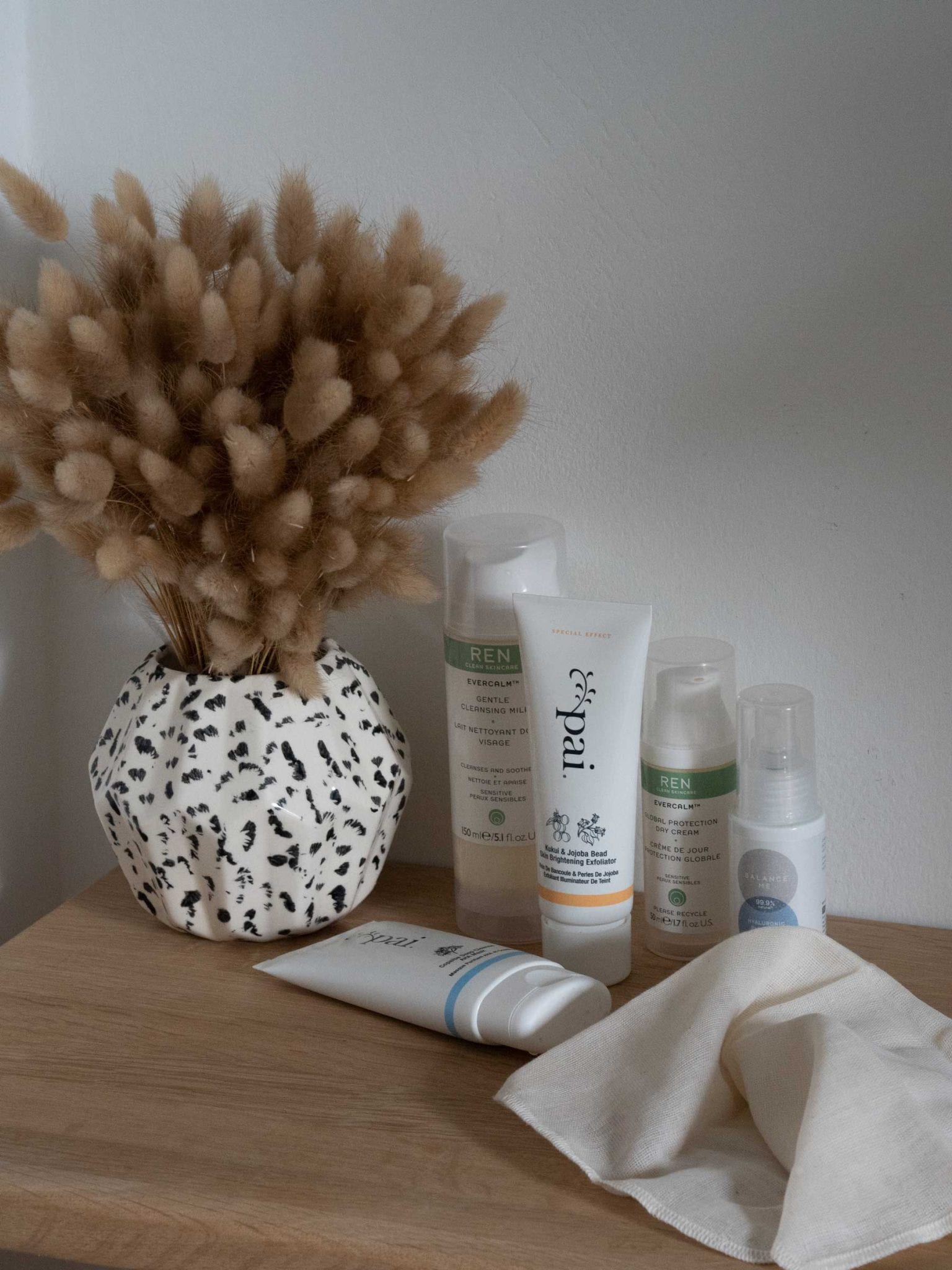The days are slowly getting shorter and the nights are growing longer. I’m embracing the change of season and looking for ways to make my home feel more cosy. Candlelight is a soothing way to help shift a busy mind into a calmer state; and with the help of some well-chosen essential oils it’s easy to relax and unwind. Before you strike a match, it’s important you know what’s in the candle you are about to burn; not all candles are made equally.
There is constant speculation about paraffin wax, and the possibility that when burnt it gives off carcinogenic volatile organic compounds (VOCs), such as acetone and benzene. Another VOC, toluene (which is irritating to the skin, eyes, and respiratory tract) may also be given off. (It should be noted that VOCs occur in all fruit and vegetables, and are not all potentially hazardous.) There is no clear conclusion about paraffin but since it is a by-product of the petroleum industry, it isn’t a sustainable option. Paraffin wax is still a popular choice with candlemakers though. It burns quicker than other waxes but it gives a good scent throw (how well the scent is dispersed when the candle is burnt).
Some synthetic fragrances also contain irritating VOCs such as formaldehyde, petroleum distillates, limonene, alcohol and esters. These can trigger headaches, dizzy spells, asthma attacks and other breathing difficulties; some are known carcinogens.
There are lots of studies proving and disproving the effects of burning candles made with paraffin wax and synthetic fragrances. My approach is to only burn natural candles, those made with natural waxes and essential oils.
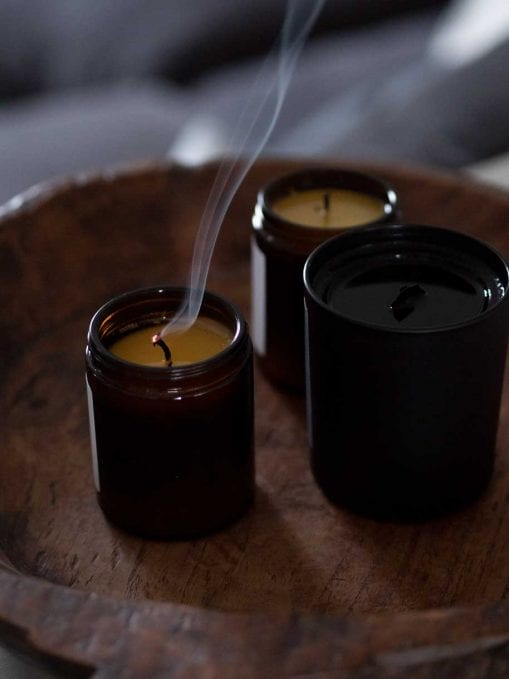
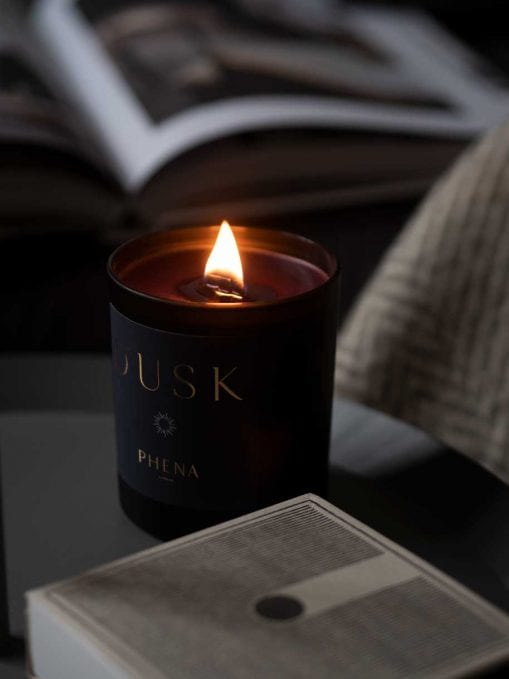
What Options Are There For Natural Candles?
Beeswax
Beeswax is a natural product, made by honey bees. They use the wax to form honeycomb cells. When honey is harvested from the combs, beeswax is a by-product. Bees are not harmed during the harvesting process but most vegans will avoid honey and beeswax since the harvesting of both takes away food from the hive. Each honey bee only produces around a twelfth of a teaspoon of honey in its lifetime. A large quantity of honey needs to be produced, in order to produce a small quantity of beeswax, making it one of the most expensive waxes for candlemakers to use.
Beeswax gives an even, slow, clean burn that is virtually smoke-free and soot-free, and does not drip; the scent throw is quite subtle though.
Soy Wax
Soy wax is one of the best bases for candles, as it burns slowly and cleanly, and is more affordable than beeswax. It is made when soybean oil is fully hydrogenated (i.e. treated with hydrogen gas to create saturated fatty acids with a higher melting point), creating a soft wax.
Some soy waxes are combined with paraffin wax to make them even more affordable. Unbelievably, even those described as 100% pure soy wax may contain a small percentage of paraffin wax. Transparency within the candle wax industry is (currently) minimal; with some producers choosing to keep their “recipe” a secret, even from the candlemakers they work with.
Deforestation (the clearing of land for crops) is a massive problem within the soy industry, especially in South America. Deforestation leads to a loss of bio-diversity within the ecosystem, it has a big impact on climate-change with fewer trees to remove carbon dioxide from the air and water, as well as the potential loss of some species.
I tend to minimise my intake of soy products anyway, due to a lack of clarity around whether they are genetically modified (GM); it’s one of the few GM foods that can be imported into the UK. Globally, a huge percentage of soy grown is GM. I prefer not to support the production of GM foods, so I look for organic soy products whenever I use them.
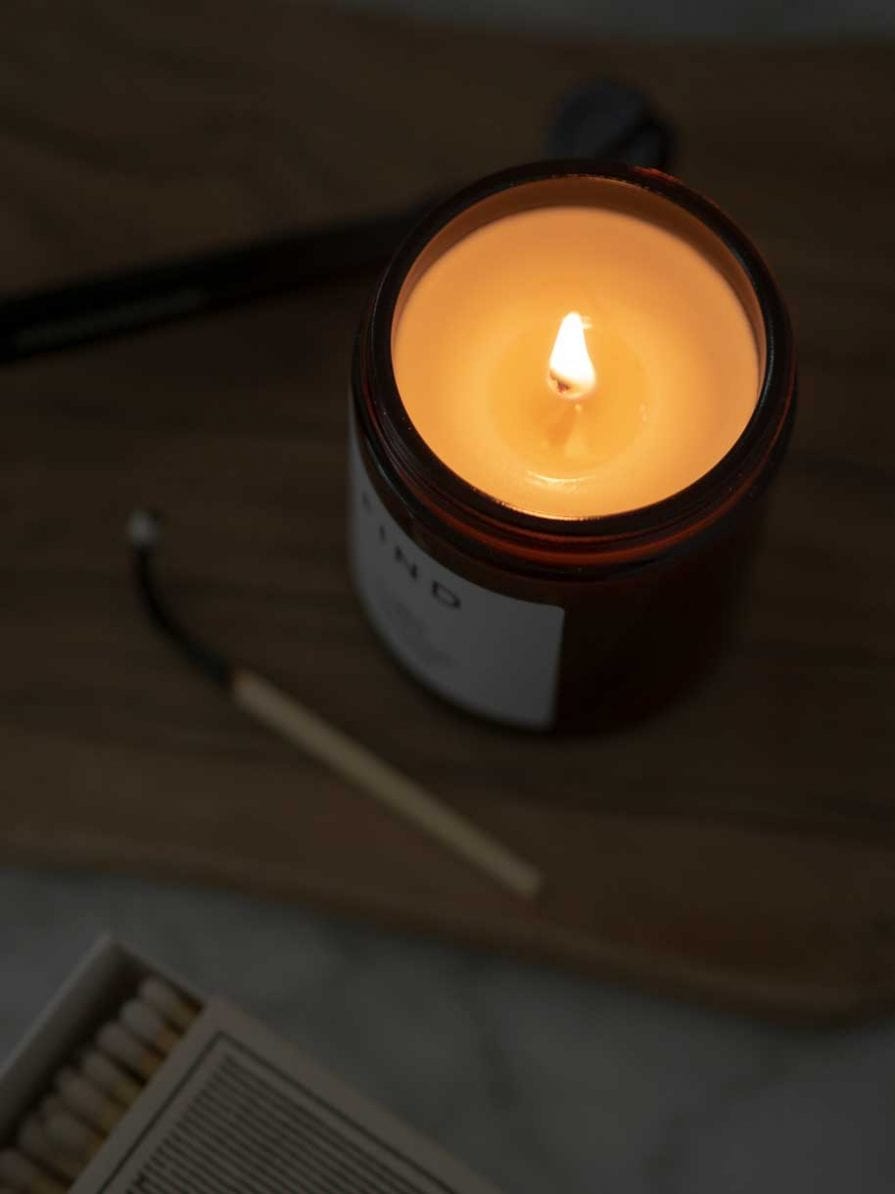
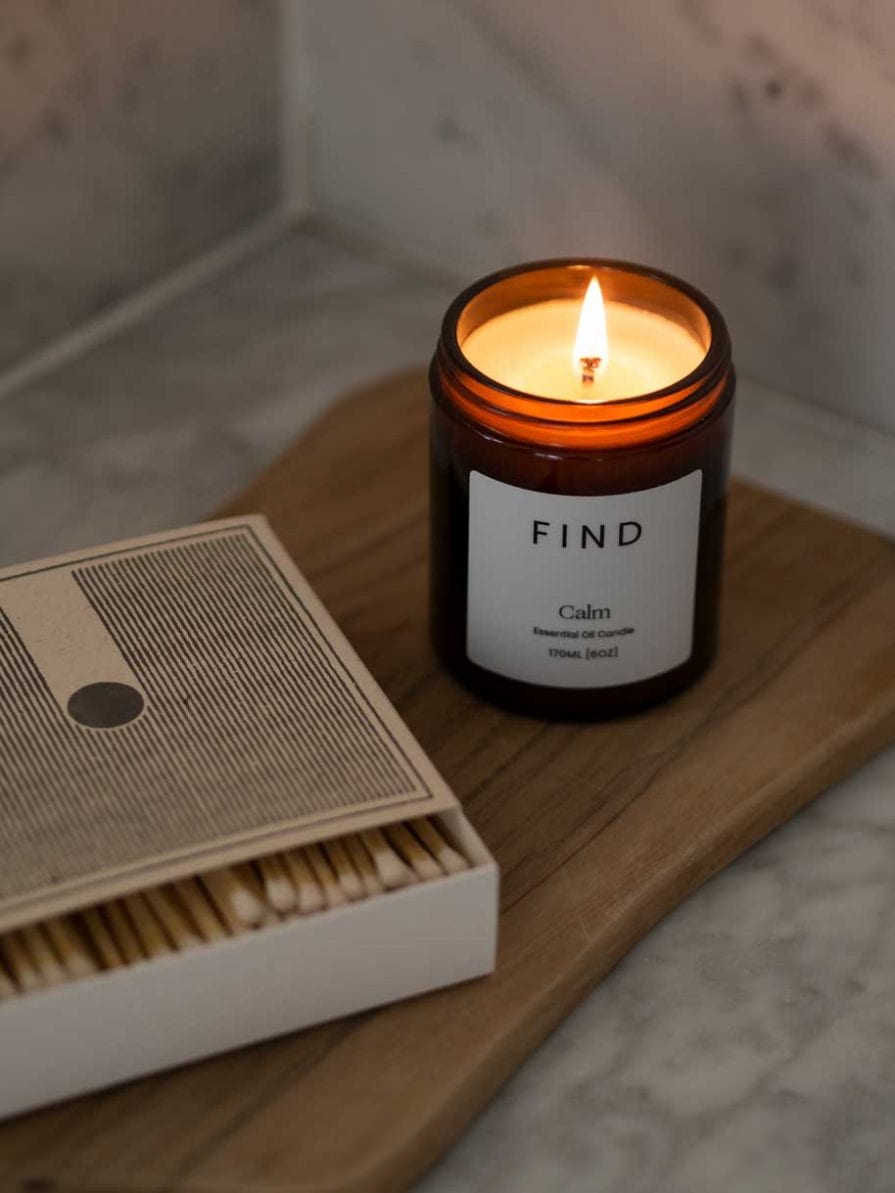
Palm Wax
Palm wax has a high melt point (higher than paraffin and soy wax), throws scent well and is a hard wax (making it ideal for taller candles). Palm wax is made when palm oil is hydrogenated. It would be the best option for candles were it not for the sheer devastation that growing oil palm trees continues to cause the planet.
Oil palm trees are native to West Africa, Central and South America. They were brought to South-East Asia as an ornamental tree crop around one hundred years ago. Fast-forward to today and Indonesia and Malaysia are producing around 85% of the global supply. In order to keep up with demand peat swamp forests (which store huge amounts of carbon) are being cleared and drained, releasing millions of tonnes of greenhouse gases into the atmosphere. At the same time, the native habitats of endangered species (orangutans, pygmy elephants, sun bears, Sumatran rhinos and tigers) are being destroyed.
The Roundtable of Sustainable Palm Oil (RSPO) have attempted to bring more transparency to the palm oil industry but it’s a little hopeless at the moment, as they have been unable to certify that their members are producing oil sustainably.
Coconut Wax
Coconut wax burns cleanly and for longer than many other waxes but its low melt-point makes it hard to use for candles. It has an excellent scent throw.
Coconut wax is made from refined coconut oil, which goes through a hydrogenation process. When the oil is refined the scent is removed and after it is hydrogenated it becomes a creamy white wax with a fairly low melt-point. This means it is usually blended with soy wax or other vegetable waxes to give it a higher melt-point, to ensure it is a wax and not an oil at room temperature.
Coconuts are a high-yield, sustainable crop but traceability is difficult. Mostly, they are grown on tropical islands such as those of the Philippines, which each have their own, unique ecosystem. Growing any single crop in a high volume is going to have a negative impact on the native ecosystem.
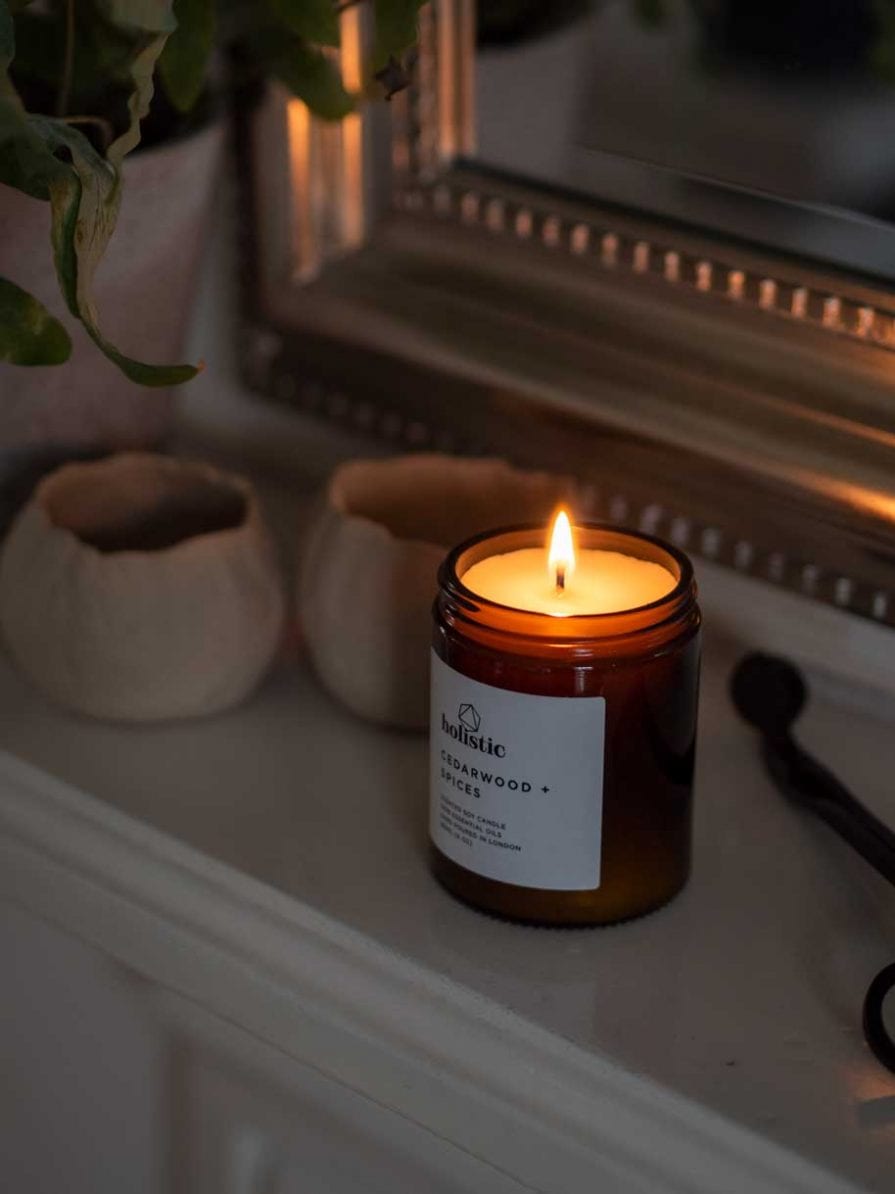
Rapeseed Wax
Rapeseed wax is a fairly new wax to be used in the candle industry but is quickly being viewed in Europe as a good alternative to soy wax, since it’s grown locally. It has a good scent throw, burns cleanly and slowly, with a soot-free burn.
Rapeseed wax is made when rapeseed oil is hydrogenated. A creamy white wax is produced that can be used in a variety of ways, depending on the hydrogenation process. It works equally well for tapered and pillar candles, as scented candles.
It’s another one of the few GM foods that can be imported into the UK; however, it is widely produced in both the UK and in Europe, where it’s illegal to grow GM crops. If sourced from the UK or Europe it is one of the most eco-friendly options. It can be completely traceable and renewable, with a small carbon footprint.
Waste Vegetable Oil
Taking waste vegetable oil and turning it into candle wax is one of the most ethical options I’ve found. It helps to form a circular economy within the vegetable oil industry. Waste vegetable oil is taken from restaurants and cafés, filtered and hydrogenated to form a clean wax. The wax can then be made into candles.
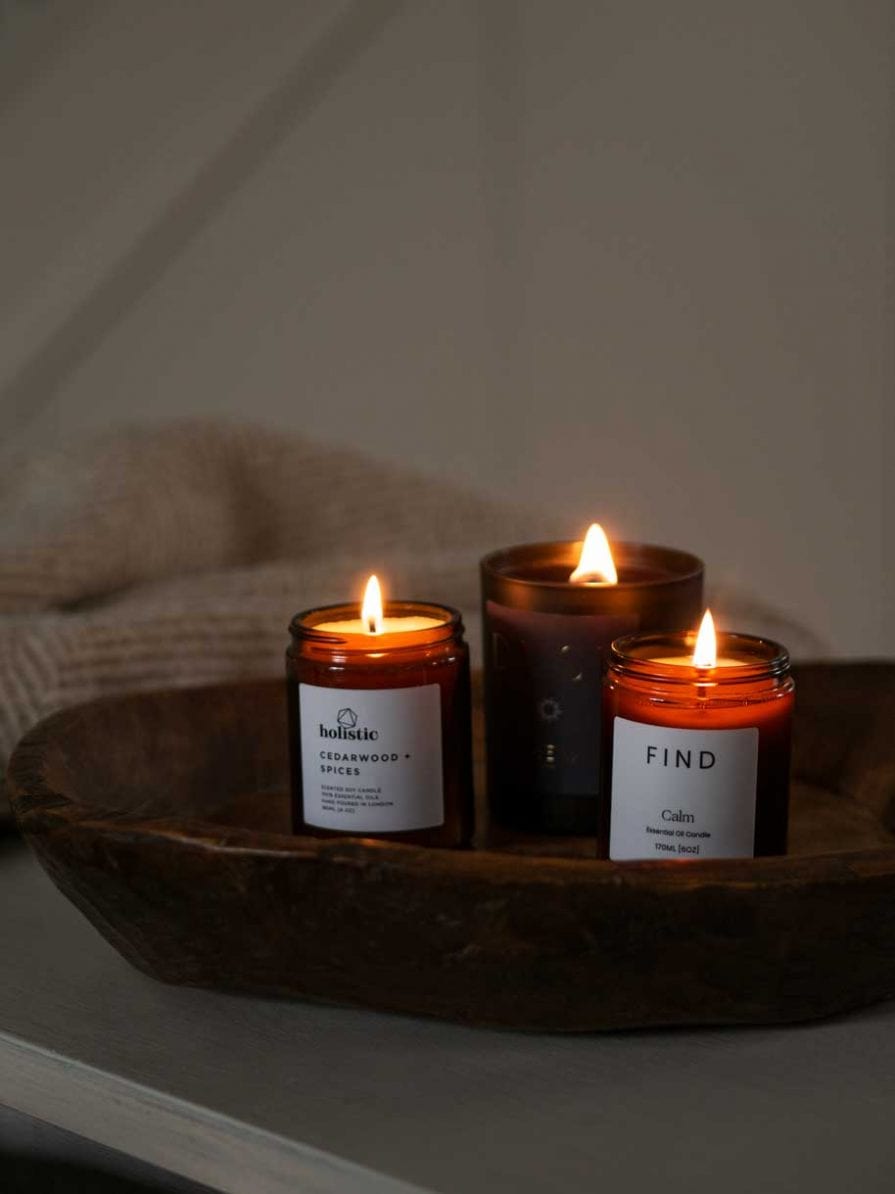
Essential Oils
Plant-based, all-natural essential oils give candles a beautiful scent that will fragrance your room. These candles also have aromatherapy benefits. A well-chosen candle can have a positive effect on our mental health. Oils like lavender, bergamot and rose can help calm a busy mind; whilst those from lemon, rosemary and peppermint can help invigorate the mind.
Essential oils are concentrated hydrophobic liquids, extracted from the flowers, berries, leaves, wood, bark, resin, roots, peel and/or seeds of a plant. Essential, in this case, means the ‘essence of’, rather than it being vital.
VOCs occur naturally in essential oils; some contain acetaldehyde, acetone, and ethanol; none of which are classified as carcinogenic. Toluene can also be found in many essential oils. Undiluted they can be an irritant to the skin and cause allergic reactions. For this reason, I think it’s important to only burn candles for short periods of time, in a well-ventilated space.
Wicks
There are hundreds of different types and styles of candle wick. The type of wick used usually depends on the type of wax used. Look for candles with wicks that are lead and metal-free; and made with a natural, clean-burning material like wood, paper, cotton or hemp that has been sourced sustainably.
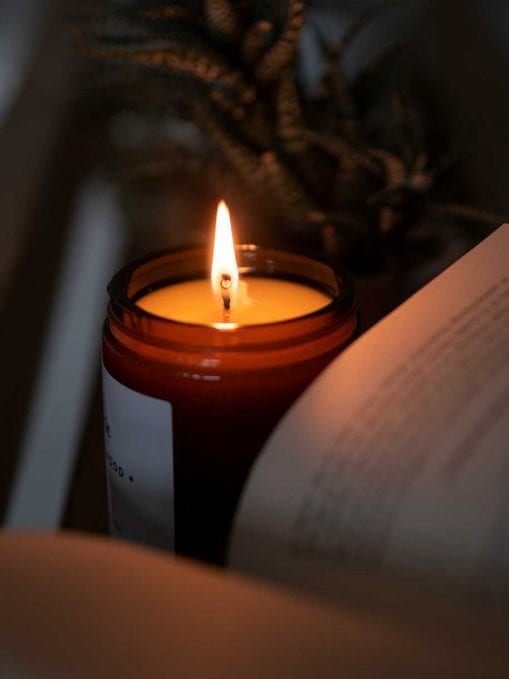
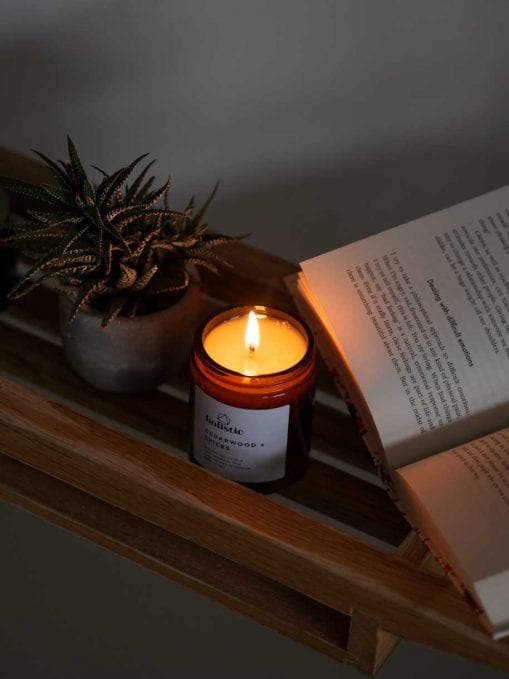
UK-Made Natural Candles
Here are a few of the best natural candles I’ve found, all made here in the UK. I’ve chosen the scents most likely to evoke a sense of hygge at home. However, each brand makes other scents if you prefer something different.
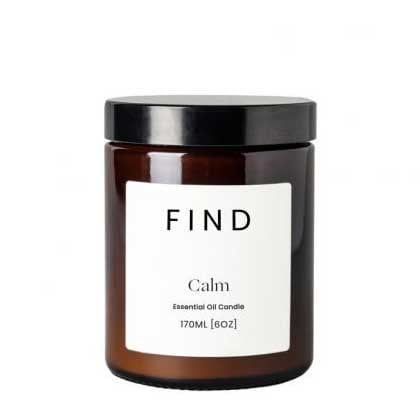
1.
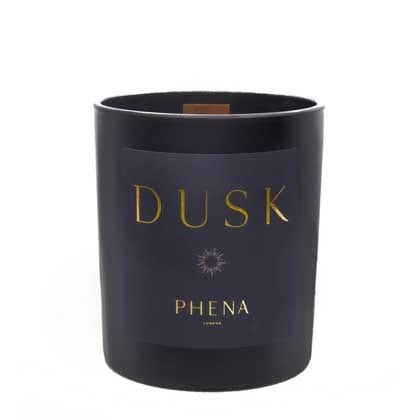
2.
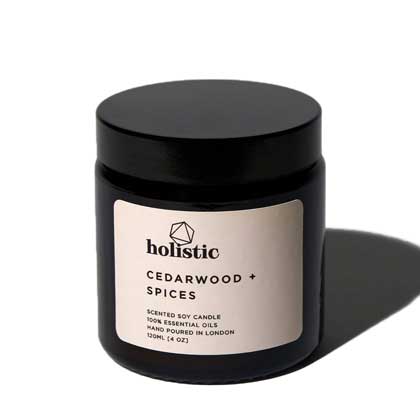
3.
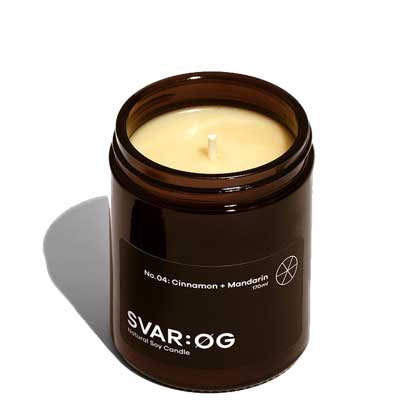
4.
- FIND YOUR CALM, Find*
100% soy wax.
Lavender, patchouli and frankincense essential oils.
Cotton & brown paper wicks with a thin paraffin wax coating.
Burn time: approx. 30 hours.
The scent is like a warming nectar, mixed with the gentle smell of fresh lavender warmed by a day in the sun. It’s an easy scent that’s calming and warming. - EDITION 01: DUSK, Phena London*
Waste sunflower oil wax.
Lavender, clary sage, chamomile, geranium and bergamot essential oils.
Forest Stewardship Council (FSC)-certified wooden wicks.
Burn time: approx. 45 hours.
The scent is a mix of fresh herbs with a light floral bouquet from the lavender and geranium, the bergamot is subtle but brings an added zingy freshness to it. The wooden wick brings an extra element of interest; it’s nice to lie in the bath listening to the crackle whilst watching the flame flicker.
- CEDARWOOD + SPICES, Holistic*
100% soy wax.
Cedarwood, cinnamon, vanilla and orange essential oils.
Cotton wicks.
Burn time: approx. 40 hours.
The vanilla and orange give this candle a nice balance of sweet and citrus, the spice of cinnamon is subtle and the cedarwood helps ground the fragrance. - CINNAMON + MANDARIN, SVAR:ØG*
100% soy wax.
Fennel, frankincense and star anise essential oils.
Eco-cotton wicks.
Burn time: approx. 35-40 hours.
The scent of citrusy mandarin and aromatic frankincense combine beautifully with the aniseed of the fennel and the slightly more fruity scent of star anise.
Further Reading
‘Frequent use of certain candles produces unwanted chemicals‘ , South Carolina University – August 24th, 2009
‘The Other Oil Spill‘, The Economist – June 24th, 2010
‘The Soy Story‘, WWF – October, 2019
‘8 Things To Know About Palm Oil‘, WWF – January 17th, 2020
‘Used in everything from biofuels to food, the impact of palm oil on global emissions‘, The Independent – January 29th, 2020
‘Why coconut oil may be worse than palm oil for the environment‘, The Independent – July 8th, 2020
‘Volatile chemical emissions from essential oils‘, Air Quality, Atmosphere & Health – August 8th, 2018
Further Watching
‘Kiss The Ground‘, Netflix – 2020
‘David Attenborough: A Life on Our Planet‘, Netflix – 2020
